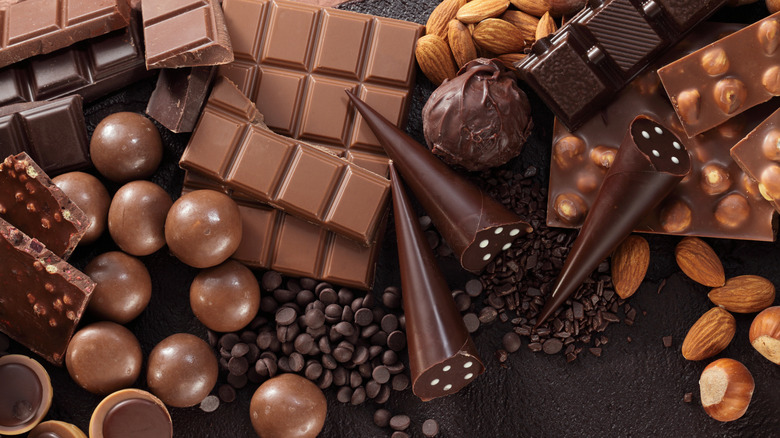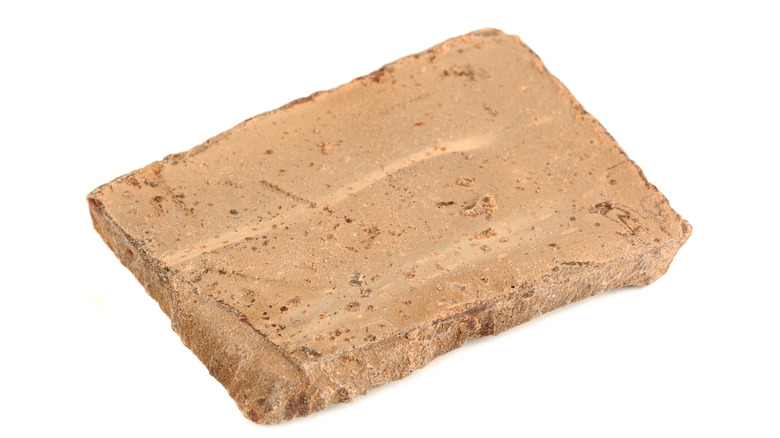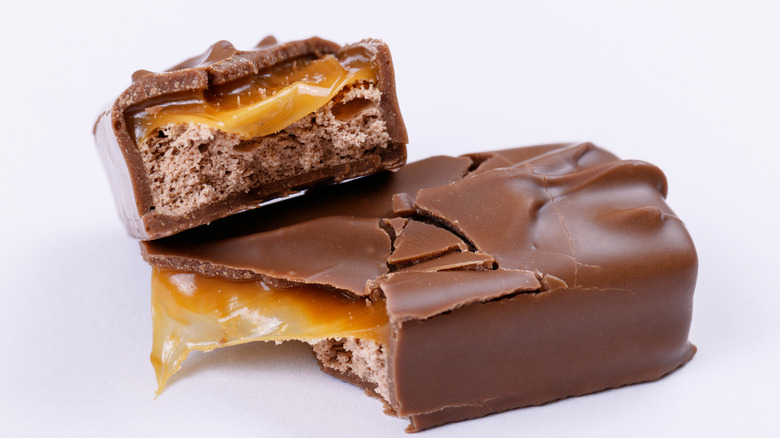What Does It Mean When Chocolate Has 'Fat Bloom'?
Chocolate has a very long shelf life. In fact, as long as it still looks and tastes normal, chocolate itself doesn't really go bad, according to Dame Cacao. However, that doesn't mean every piece of chocolate candy is safe (or appetizing) to eat indefinitely. While most chocolate candy can last for months or even years after its expiration date, components like milk, cream, nuts, or caramels can cause the chocolate to spoil eventually. Therefore, the purer the chocolate, the longer its shelf life will be.
Chocolate treats like semi-sweet, dark chocolate, and baking chocolate, which have a high percentage of cocoa relative to milk, can last for up to two years, according to The Pioneer Woman. However, milk chocolate, which contains more dairy, tends to lose its freshness after about a year, while white chocolate, which mostly consists of dairy and cocoa butter rather than real cocoa, only lasts for about six months. Nuts, caramels, and other wet ingredients will also shorten the shelf life of the candy.
But even though chocolate can last for a long time, that doesn't mean it remains unchanged over that time. Old chocolates can still develop "fat bloom": an unappetizing-looking layer of gray or white dusty streaks that might have you reaching for the garbage can. But you don't have to toss that old chocolate bar just yet.
Fat bloom is caused when the fat melts and then recrystallizes
Fat bloom, which can occur in chocolate that is stored in certain conditions or for long amounts of time, is when the surface of the sweet stuff develops streaks of white or gray that can look something like dust. However, rest assured the chocolate hasn't grown so old that a fine layer of dust has formed over the top. The streaks that you're seeing are actually the result of fat crystals that have deposited on the surface of the chocolate. If the chocolate is stored at a temperature that is too high, the fat in the candy will melt, according to an overview in "Cocoa Butter and Related Compounds." After the fat melts, it breaks down and recrystallizes into a visible layer of grayish streaks on the candy's surface.
However, that is not the only kind of bloom that chocolate can have. Chocolate can also develop a grainy, gray layer that is known as a moisture or sugar bloom. This occurs when the chocolate has been exposed to water or humidity. The sugar soaks up the moisture, causing it to crystallize, which creates an irremediable layer of gritty, grainy, gray crystallized sugar on top of the chocolate, according to Serious Eats.
Chocolate that has bloomed is still safe to eat
Luckily, if you store your chocolate correctly, you can reduce the chance that it will develop these unsightly blooms, even if you like to keep your Halloween candy stash in your house until the following October. To avoid fat bloom, it is important to store your chocolates in a temperature-controlled environment, ideally between 55 and 65 degrees Fahrenheit, according to Serious Eats. It is also important to keep your chocolate away from water and out of the refrigerator, where condensation can produce moisture on the chocolate's surface. Ideally, a cool, dry pantry is the best place to keep your chocolate candies until you are ready to enjoy them.
And the good news is, if a bloom does happen to develop on your chocolate, that doesn't necessarily mean you have to throw it away. In fact, as long as there is no visible mold, chocolate that has developed a fat or moisture bloom is still perfectly safe to eat. However, it does likely mean that the chocolate has been sitting in storage for quite some time, so it might not taste quite as fresh or flavorful as a new candy bar, and it might have a gritty, unappetizing texture. Instead of popping it right in your mouth, The Pioneer Woman recommends using old chocolate in your favorite baking recipes, where the texture and flavor will blend right in and any bloom will likely be unnoticeable.


